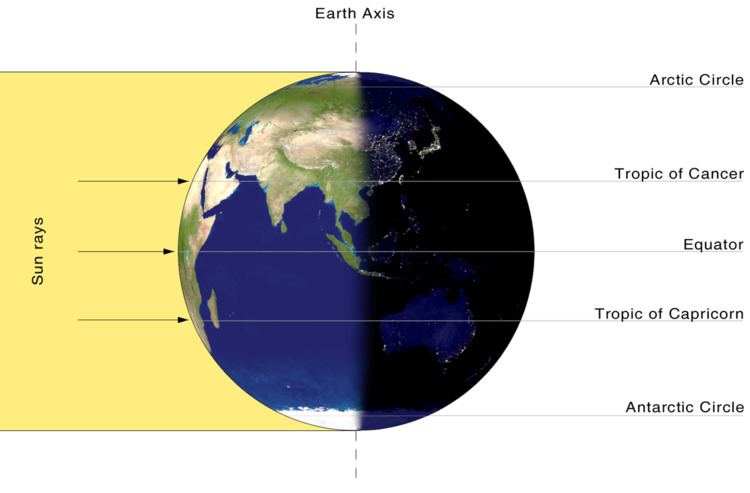 | ||
The September equinox (or Southward equinox) is the moment when the Sun appears to cross the celestial equator, heading southward. Due to differences between the calendar year and the tropical year, the September equinox can occur at any time from the 21st to the 24th day of September.
Contents
- Occurrences
- Constellation
- Apparent movement of the Sun in relation to the horizon
- Calendars
- Commemorations
- References
At the equinox, at the equator, the Sun rises directly in the east and sets directly in the west. Before the Southward equinox, the Sun rises and sets more to the north, and afterwards, it rises and sets more to the south.
The equinox may be taken to mark the end of summer and the beginning of autumn in the Northern Hemisphere, while marking the end of winter and the start of spring in the Southern Hemisphere.
Occurrences
The September equinox is one point in time commonly used to determine the length of the tropical year.
Date and time of the September equinox that occurred from the year 2001 to 2011 are listed as follows:
Constellation
The point where the Sun crosses the celestial equator southwards is called the first point of Libra. However, due to the precession of the equinoxes, this point is no longer in the constellation Libra, but rather in Virgo.
The September equinox passed from Libra into Virgo in year −729, will pass into Leo in year 2439.
Apparent movement of the Sun in relation to the horizon
At the equinox, the Sun rises directly in the east and sets directly in the west. However, because of refraction it will usually appear slightly above the horizon at the moment when its "true" middle is rising or setting. For viewers at the north or south poles, it moves virtually horizontally on or above the horizon, not obviously rising or setting apart from the movement in "declination" (and hence altitude) of a little under a half (0.39) degree per day.
For observers in either hemisphere not at the poles, the further one goes in time away from the September equinox in the 3 months before that equinox, the more to the north the Sun has been rising and setting, and for the 3 months afterwards it rises and sets more and more to the south.
Calendars
The September equinox marked the first day of the French Republican Calendar.
